April/May 2012
Behind the Dykes & Along the Canals
Belgium, Holland, Northern Germany
Oh, it’s a long way to Scandinavia – if you start in England, and then stop to see Belgium, The Netherlands and Germany first. But that’s okay if you’re having fun.
We’ve safely returned across the sea, and are (LEA) Loose in Europe Again. Leaving Texas at the end of March, during a very warm spell, we were hoping for a continuation of that same excellent weather in England. Not to be, of course. “The coldest Easter in England in many a decade.” No surprise. We’ve often been accused of bringing bad weather with us.
We flew into Heathrow, where our great friends, Matti and Ron Sanford, gathered us up in their small European motorhome and carted us off to Cheltenham, where the Tiger was waiting. New wheels? Oh, how kind of you to have remembered! Yes, new wheels. They had only just arrived a day or so before, but there they were. Rick stood and grinned. They just looked like wheels to me, but then, what do I know?
We picked up our pretty little rascal and trucked off the few feet to the campground where we were to stay for a few days. The next morning we discovered (a) a substantial water leak, probably due to the freezing weather over the winter; and (b) we had been joined by a proper pair of darling little English mice. They’d destroyed many a bag-wrapped item, and had largely chewed apart a rather nice Mexican floor rug; they had quite a taste for tea bags (good Earl Grey) and other similar foodstuffs, but no interest at all in macaroni or other forms of pasta. True Brits. It was a good two weeks before we finally were able to get rid of them.
We also had a tad more work to be done on the Tiger, using parts we’d brought with us from home. In the course of all this, a piece of the Tiger’s anatomy broke, causing us to wait a week while a new part was flown in (over the Easter long weekend, natch). But finally, finally, the Tiger was out of the hospital and we were ready to hit the road.
While waiting for the part to arrive, we spent a couple of days (and enjoyed a splendid Easter brunch) with our English cousins and various relations. It was nice to be included in a traditional English holiday celebration (most of which seems to revolve around chocolate).
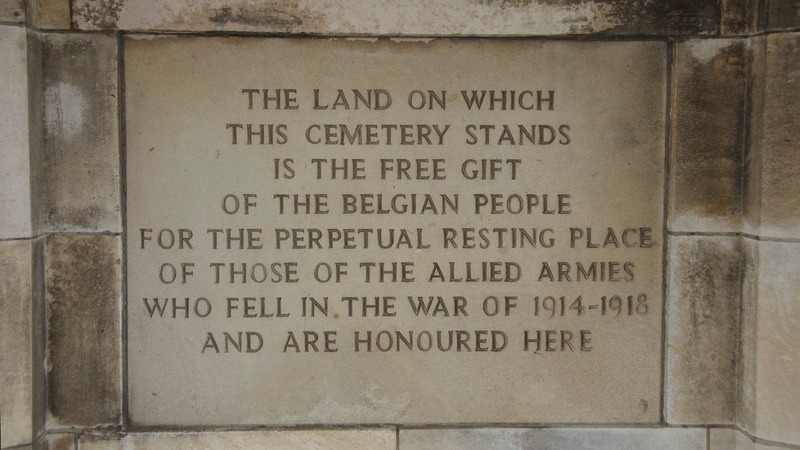
All this took a couple of weeks, and then we made our way across the Channel from England into France and thence to Belgium. Despite nasty, long-enduring colds and very wet weather, we were quite pleased to be back on the road and heading for new territory. (You like that word “thence”?) Crossing western Belgium, we wanted to see the area around Ypres (Ieper in Flemish) and Veurne. Ypres was famous as a site of particularly heavy warfare during WWI; the Ypres Salient (the idiots spent 4 years fighting over a few kilometers of land a few meters higher than the surrounding area; generals are so stupid!) cost thousands of lives for little or no gain. We walked part of the Salient, and visited the Tyne Cot Cemetery, the largest Commonwealth cemetery on mainland Europe. During 1917 alone almost 300,000 British soldiers died in this area. The cemetery is beautifully maintained as always and there is a new visitor center where the names of the dead are perpetually intoned.

The city of Ypres was particularly interesting because the town center had been so terribly damaged in the war that Winston Churchill wanted the whole area left as it was as a memorial. The city decided instead that it must be rebuilt and life must go on. There is a wonderful series of photographs in the visitor center showing the city hall before the war, then almost completely leveled after the war, then completely rebuilt as it is today. Ypres turned out to be a really pretty town.
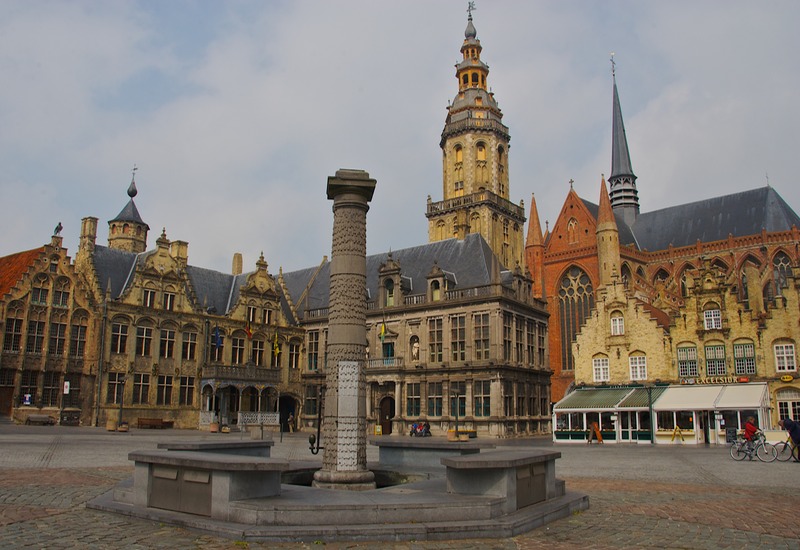
Veurne we found surprisingly interesting; an elegant city. It had not been badly destroyed by war, and was a pleasant place to wander with a wonderful cathedral and other buildings. Both a castle and an historic windmill were nearby, too. We were delighted we had taken the time to visit this area.
We went on to Tournai, a nice city we have visited before, and from there took the train to Lille, France to visit French friends who were meeting us there. We first encountered Danial and Anne-Marie Chavance, along with their 3 children, in Argentina in 2009, and then stayed with them outside Paris in 2010 when we were waiting for the Tiger to be shipped to Belgium. Until now we’d not been able to see them again. But Rick and Anne-Marie put their heads together and figured out a plan: we would meet in Lille; both parties would arrive on the train and we could have a few hours together
We sure enjoyed that visit, and even got in a few pictures of Lille. After Lille, we hunkered down for a few days, hoping that both the weather and our colds would improve. Neither happened, so we gave the good Gallic shrug and decided The Netherlands awaited. Perhaps it would be both sunnier and warmer. We enjoy being in Belgium – a lot – and hoped that The Netherlands would be just as much fun.
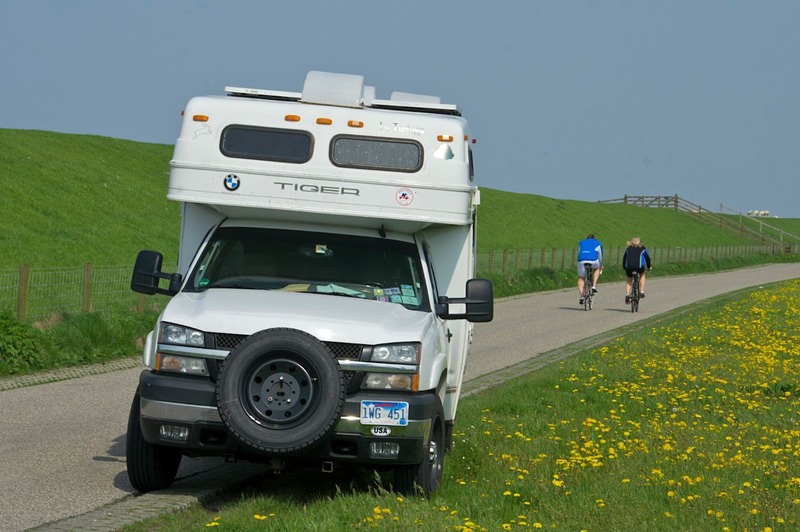
So what’s “Holland” and what’s “The Netherlands” -- I know you’re desperate to get this important question answered. Well: the name of the country is officially The Netherlands. I’m not sure anyone but the Brits and the Americans use “The”; the Dutch say Nederlands. This includes this small country squashed between Belgium and Germany, along with its overseas possessions, Indonesia being arguably the most important.
“Holland” comprises two of the country’s 12 provinces: Noord-Holland around Amsterdam and Zuid-Holland around Rotterdam and Den Haag (The Hague). This is where the majority of the population live and where most tourists visit. If you’ve been to Amsterdam and its surrounds, you can say you went to Holland. If you travel further afield, you probably say you’ve been to The Netherlands. Now that’s our interpretation of the official version. The guidebooks and also lots of information in museums, etc. seem to use either, at random.
We spent two weeks seeing The Netherlands and enjoyed our time there. The countryside is lovely: green-green-green fields interspersed with large forested areas and lovely small towns. Very nice, helpful folks who were happy to see us and interested in our adventures, although we found them more reserved than in some other areas we’ve visited. Free camping is not allowed here, and designated overnight locations are not as prevalent as elsewhere, so we found ourselves organizing our route around known stopover spots. But we did pretty well, and saw a lot of the country.
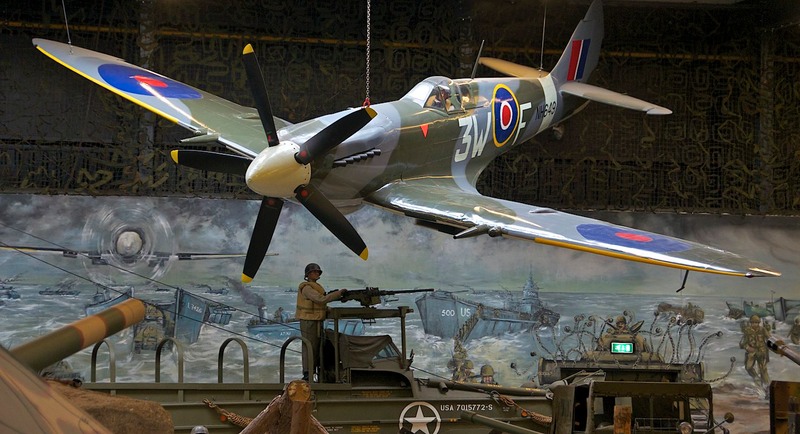
We crossed over from Belgium into the eastern part of The Netherlands. The area seemed prosperous and was certainly handsome and bucolic. It was quite woody; we assumed the trees had all been planted since the wars, since we saw no old-growth trees.
The eastern provinces, smack dab up against the German border, suffered horrible fighting during WWII. The battles around Arnhem are familiar to many, particularly after “A Bridge Too Far.” We began our visit with a look in at the Overloon War and Resistance Museum in the forests south of Arnhem. Overloon was fantastic. It contains a large WWII museum complex (called Liberty Park), a significant part of which is devoted to the fierce tank battle for control of this area.
There is also a large and quite complete separate museum that covers many facets of WWII, including extensive material on the very active Dutch resistance movement. And then there is the George C. Marshall Museum that contains the largest collection of military vehicles in Europe. It was an amazing pile of tanks and stuff, each group set in unusually life-like settings. We were there for hours.
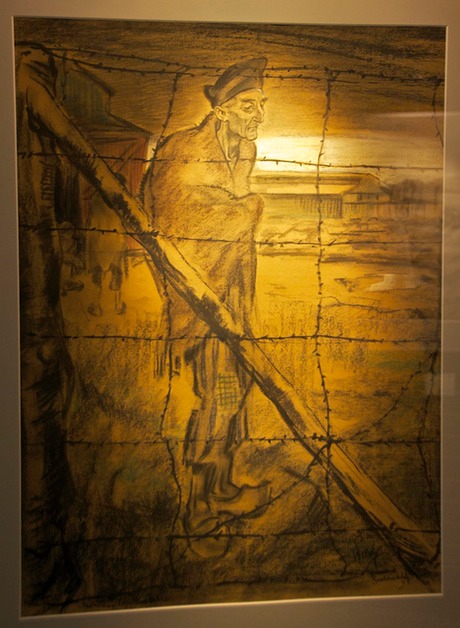
There are many modern sculptures on the grounds, dealing with the agony of war. We also discovered a very detailed informational display, including lots of pictures, concerning the recent discovery of several Dutch soldiers who had been buried in a Russian field and who were exhumed and brought here for reburial. There were tanks to crawl around on; military equipment that had the largest wheels/tires I’ve ever seen (putting the Tiger’s new Dancing Shoes to shame); and tons of other stuff.
Arnhem itself is mostly just a modern city, although driving through you can identify certain spots where the British soldiers held out as long as possible, trying to protect the bridge there (the “bridge too far” the generals finally admitted) before having to either escape or surrender. The Airborne Museum and Cemetery are nearby, in Osterbeek. Another excellent museum, it is housed in the hotel the British used as headquarters during the fighting, which makes it even more evocative. There are excellent displays, and an unnerving walk through narrow passageways as the battle elements play out around you. At one point the shadow of a very noisy tank passes very close; I was overwhelmed with a sense of dread.
But, lest you decide that all we do is think about war and explore locations where it was at its worst – we did a whole lot of exploring in The Netherlands that had nothing to do with fighting.
My first and topmost priority was to see the tulips. And indeed we did – by the bucket-full. They are grown in various areas, but the vast majority of the fields are in Holland, along the western edge of the country. And we do mean “vast.” Field after field, all available for the gazing; and bulbs for purchase as well. The center of the action is in the area around Lisse, home of the famous Kukenhof Gardens (which I recommend to you if you only have limited time and no transportation). We did not visit the Gardens, as the tour buses were present in their multitudes and the tulips are free for viewing in the fields, with plenty of room to pull off the road and take as many pictures as you would like. We found a couple of sunny days and explored to our hearts’ content. And we’ve got the pictures to show for it! It was a lovely experience.
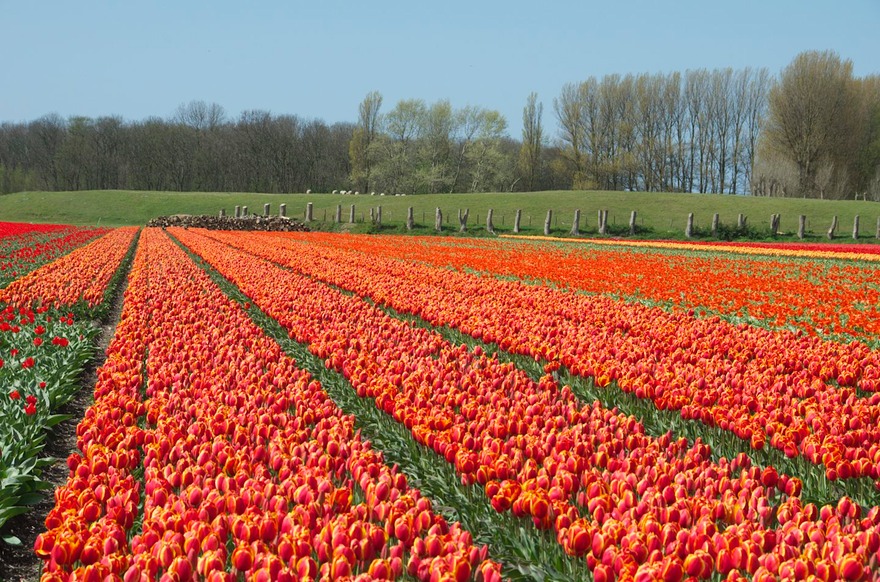
Also in the Lisse area was a cool motorcycle museum – the Laverda Museum – that Rick was hot to get to. It turned out to be a real find for a couple of reasons. As we’ve mentioned, it was going to be a bit more difficult for us to find overnight spots in The Netherlands and there were none anywhere near this area. Well, when we arrived at the museum we found it was located right on the edge of a patch of tulips, and only about a kilometer away from Kukenhof Gardens. We asked the owner of the collection for permission and he let us stay in his parking lot for two nights. It made an ideal base for us as we went out to see the tulip fields one day, down to Den Haag the next, then saw the Laverda Museum on the third before leaving the area. Absolutely perfect. It is a great little museum put together by a long time Laverda enthusiast and well worth the visit. I’d never heard of this Italian bike, but Rick, who knows all, was pleased to be there.
Lisse is not far from Den Haag, home to several excellent museums. Unfortunately, the Royal Cabinet of Paintings, where the Vermeer paintings we were so interested in were housed, was closed for renovation so they’ll have to wait for another time.
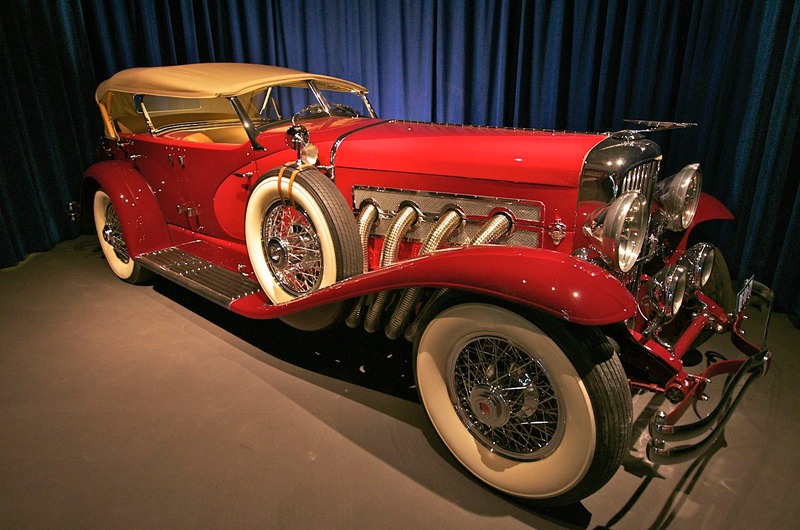
But the magnificent Louwman, the Dutch National Automobile Museum, only recently completed, was ours to delight in. We arrived early and stayed late. It was a terrific day. This is an amazing place and is our new favorite auto museum. Not only is the building wonderful and the collection of autos absolutely superb, but the information presented is nothing short of spectacular. Individual histories of the specific cars on display are often given in great detail and they make fascinating reading. Rather than repeat the information here, let us suggest that you visit our separate website, Motor-Museums.com, then go to the Europe Home Page and you will find the Louwman Museum right at the top of the page. There, Rick tells the story in detail and with lots of photos.
We were enjoying being in the west, but were feeling a bit overwhelmed by the volume of people. About 65% of the country’s population lives in the 27% of the land that would disappear if not for the dykes. That’s a whole bunch of folks in a pretty small area (and why do they want to live someplace that could flood you out? have they not heard about global climate change?); the congestion is pretty bad. The Belgian low country is peaceful; the eastern part of The Netherlands is calm; but the whole area around Rotterdam-Amsterdam-The Hague-Haarlam is something else, dude! We wanted to visit Amsterdam, but decided to let it wait for now, and work out a strategy.
So we decided to head out of the city area and explore a bit further north. Quickly we passed through the suburbs into the bucolic countryside; we were still surrounded by tulips, but now they were joined by picturesque windmills and thatched-roof houses. It was still rainy, but getting a bit warmer.
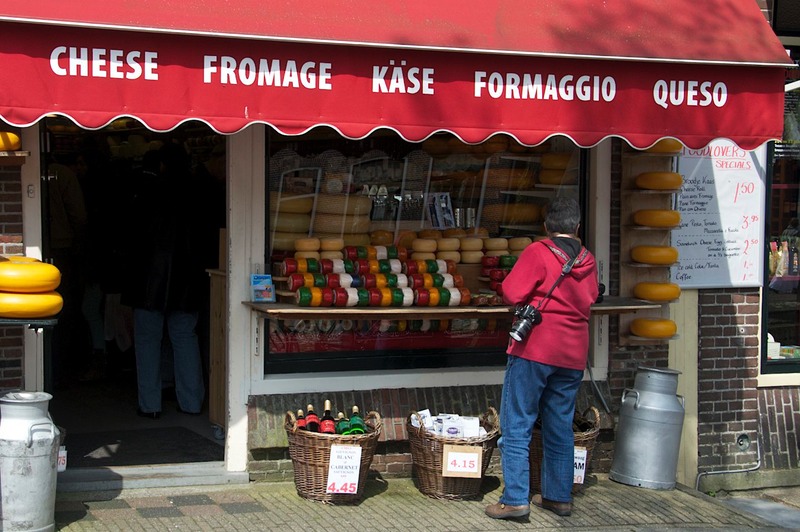
We wandered among the dykes for several days. Generally they are too high to see over, but they are grassy and are usually covered with nature’s own gardeners - sheep, and this time of year cute little lambs as well; absolutely charming. Sometimes there are stairs you can climb so you can see over the top of the dyke, and find out what the people are being protected from -- there was water absolutely everywhere: canals (with plenty of barges but also lots of pleasure boats), big lakes, small waterways beside peoples’ homes, waterways between plots of cultivated fields. It was quite pretty.
We wanted to check out one of the “cheese towns” so stopped in Edam; this was a good choice. Edam is a very small town, along a canal, and lovely. Good cheese was available (and good bread, too), the canals were picturesque, the sun came out, and we had a nice afternoon. It was the Queen’s Birthday weekend, a national party time, but here it was peaceful.
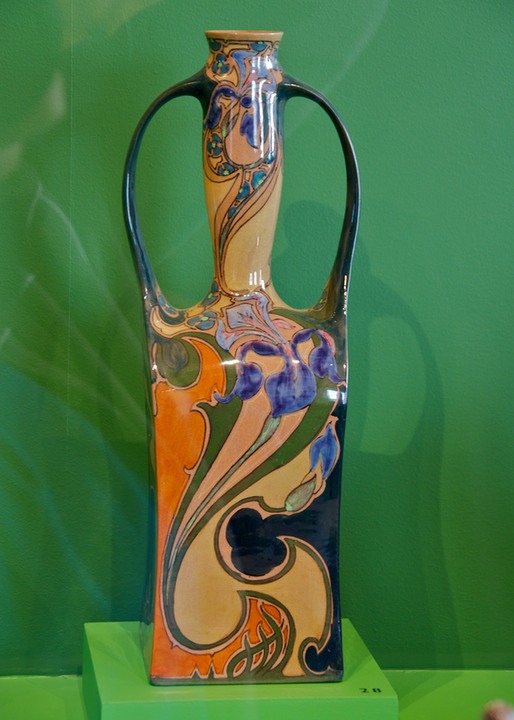
As you probably know, Holland used to flood, badly. The dykes (dijks) keep the water out. The biggest and best-est closed off (and eliminated) the Zuider Zee, giving protection to all those huge cities where all those folks live. It’s called the Afsluidijk; its completion created Ijsselmeer, an inland fresh water lake. More importantly, it protected huge areas of land that were now available for reclamation, which proceeded over the years. At the same time, the inland fishermen were devastated. Some took to the open sea, others adapted to new methods to work the inland fish, but many lost their livelihood. There’s a flip side to every coin.
After crossing the Afsluidijk, we found ourselves in Fryslan, home of the Friesian horses and cattle. The horses are black, the cattle black and white. And there’s plenty of grass and water to keep them fat and sleek. Totally cool.
We began working our way down the eastern side of Ijsselmeer. We spent a brilliant couple of hours at the incredible Keramiekmuseum (ceramics museum) in Leeuwarden. It’s housed in a great old building, fun to explore all by itself, and the permanent collection is extremely good, including terrific examples of early Asian pottery. But even better was a temporary exhibition of ceramics as a medium for presenting landscapes and gardens. It covered many historical eras, but for us the very best was an extensive collection of art deco work. Other than the museum, we didn’t spend much time in Leeuwarden, but we did drive through the city and found it lovely and quite interesting looking.
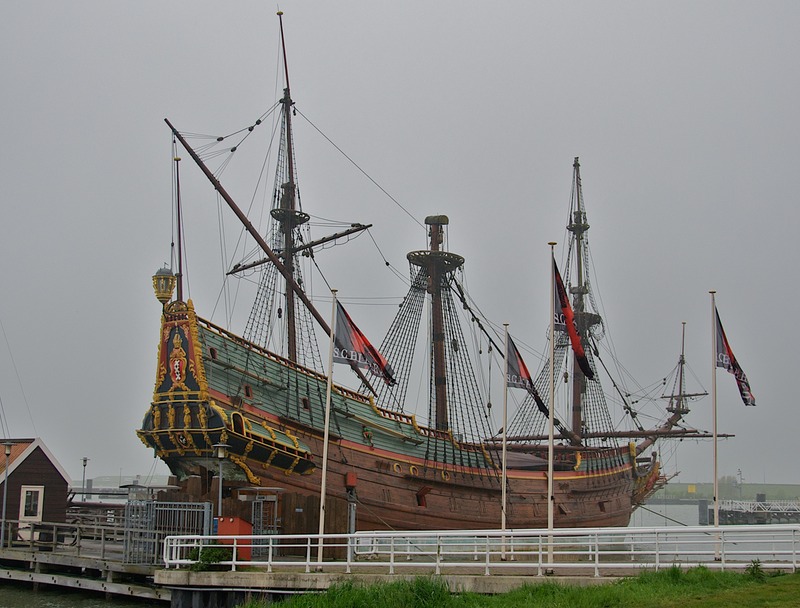
Another great city we stopped at was Lelystad, an old harbor town. Along one of the canals, there was (permanently) docked the reconstruction of the Batavia, a Dutch East Indiaman who sank on her maiden voyage in 1628. This recreation had been begun in 1985 and was a 10-year project carried out using the methods of the 17th century. It was really neat. We got a guided tour and were allowed to crawl all over her. Being more used to ships of the 19th and 20th centuries, I was surprised to learn that the Batavia had no ship’s wheel. It was steered by use of a tiller with a long pole. Quite archaic; no wonder they ran aground off the coast of Australia.
We had lots of fun, not least because our guide spoke excellent English and was quite interested in chatting with us about all sorts of things. About the same age as we are, he was interested in knowing about how we thought America was doing, shared his thoughts about the European Union and the future of the world, and discussed Netherlandish politics with us. Amusingly, he commented that English is an easy language to learn, while Dutch is horribly difficult. We would certainly agree.
We stopped to visit Naarden, which is a splendid medieval fortified town that is almost untouched by modern life (totally killer; we had somehow forgotten to take our cameras with us when we wandered around, but wow! – go check it out). And Naarden, the guidebook said, has frequent train service into Amsterdam. So we decided to use this location to launch our attack on the city.
We were able to park near the station and, after getting some help in figuring out how the system worked, we found ourselves hurtling toward the city, and then suddenly emerging from the Neoclassical train station and immersing ourselves in the swarms of folks enjoying the pleasant Sunday weather.
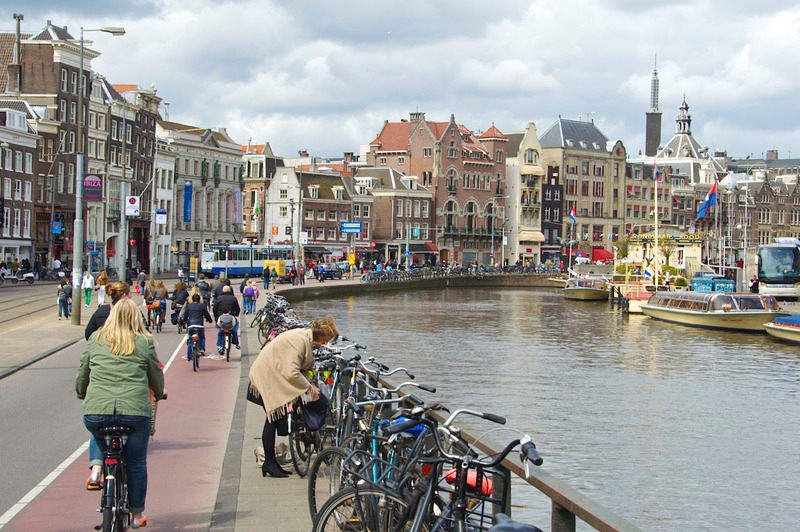
So, what did we think of Amsterdam? There’s the good (actually quite nice), the bad, and the atrociously ugly. The city has a great deal of charm, when you get away from where all the tourists are, but that is hard to do. The tree-lined canals are picturesque, people-watching is always a pleasure, and there is some interesting old architecture.
The bad? All of the good things would be quite terrific if you could just get rid of all the tourist clumps. Making your way through the most visited areas, which are virtually impossible to avoid as they surround the main cathedral, the train station, and other areas of interest, is difficult; this is where you find the red light district (pretty ho-hum these days), and the cannabis cafes. This part of the city is pretty seedy and trashy, and who really cares about all of it any more? It seemed to us that much of the old town area had been turned over to the worst of tourism’s baser elements with no attempt to preserve the historic nature of the city. We were also put off by the 70’s architecture – that was atrociously ugly.
So, would we go back? No, probably not. I think we’re just too old (Rick prefers mature) to enjoy the ambience for which the city is famous. Did we miss anything we should have gone to? Yes; a day structured around the Rijkmuseum and the Van Gogh Museum would have been more enjoyable. We had decided we wanted to “see” the city instead, and we really didn’t want to go through all the machinations of coming back a second time (it would have been much more difficult for us to manage other than on a Sunday), so missed out. But that’s why everyone’s time in Europe is unique, right? Perhaps another time. Oh, you’re saying: they didn’t go see Anne Frank’s house. I’d already seen it and Rick said he didn’t care enough to stand in the long line.
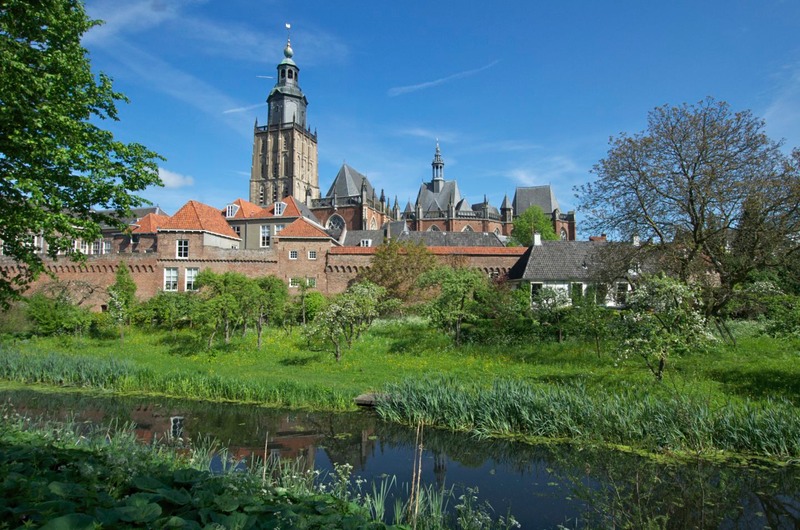
And we were starting to think about Scandinavia. So we began moving further east, across the northern Netherlands. As we left the tulip fields, we found ourselves in the midst of azaleas and rhododendrons. We made one last visit, in Zutphen. This is a smallish medieval town with some interesting architecture. We spent the night parked across the canal from some gorgeous old buildings, which we explored the next morning. But we were beginning to feel we’d seen enough, so didn’t stay too long. By now we were ready for northern Germany and then… Denmark. The weather was beginning to improve, and, as we moved further east, it was warmer and not so drippy. We were feeling healthy at last and ready for new adventures. We turned northeast, and crossed the border into Germany.
Some last thoughts about The Netherlands? It’s a terrific place to visit. If you come, try not to limit yourself to just seeing “Holland” – get out into the countryside and look further east. You do (eventually) get above sea level. The land is forested and very pretty, and filled with neat-and-tidy small towns. There are people riding their bikes absolutely everywhere – and many of them are really very old folks. Speaking of old folks: often there are charming residences for retirees in the quiet parts of the towns, with lovely, well-tended garden areas.
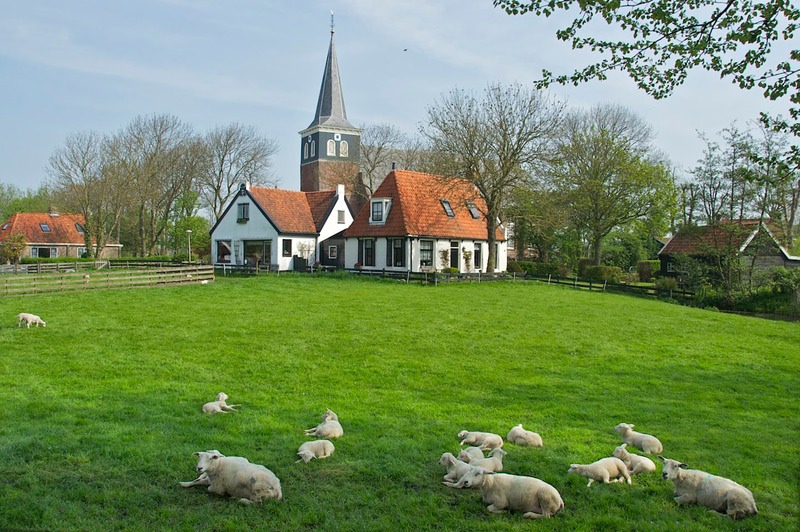
We saw more trees in The Netherlands than we ever expected, and also many areas that looked quite English, with their cottages-flowers-sheep-thatched roofs and open fields. It was lovely. We happened to celebrate our 15th wedding anniversary in such an area, and it was just about perfect.
Just as in Belgium and England, all the boys wear their hair like Tintin, if you remember the Belgian cartoon character (and recent movie). The European kids all look alike in their dress, just as they do in the States. Not standing out is a universal given among teenagers, sad to say. Oh, yes: drempels are Dutch speed bumps. And Dutch roundabouts are even more controlling than those in England, and we thought that could never happen!
But enough of The Netherlands! You want to hear about what’s between there and Denmark, don’t you! Northern Germany, of course.
With Denmark firmly fixed in our sights, we intended to spend a few days crossing a small corner of Germany and then hop on into Scandinavia. But we hadn’t counted on the tremendous hospitality and kindness of two sets of friends we had earlier met in our travels, and who were awaiting us at their homes.
Gaby and Herb Pietsch live in a pretty corner in the northwestern part of Germany; it’s rural and bucolic, has its own set of dykes and canals, and is a popular resort area. In heading toward their home, Gaby had thoughtfully suggested a route that would take us to some interesting spots and give us a sense of the area. This neck of the woods is totally ignored by our guidebook, and we would have missed a very pleasant region without her good advice.
We spent the first night in Leer, in a parking area right next to the canal harbor and the old part of the city. Leer is quite ancient and charming and a walk around was great fun. We looked in at the 1785 Grosse Kirke, which was very spare and looked very much like many in New England; we learned it was part of the Evangelical Reform churches of the World. Leer was a treat.
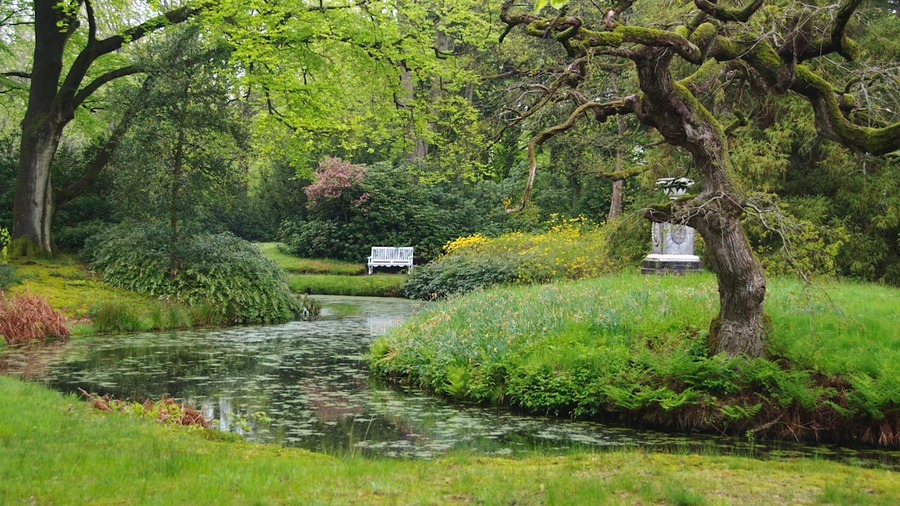
The next day we crossed through the Norden area, a large tract of peat (?) bog with shaggy cows and lots of dairying. We were headed for the castle (schloss) at Lütetsburg. The extensive gardens there are quite lovely, and the rhododendrons were just coming on. It was drippy at first, but the rain stopped and we enjoyed wandering the paths between the trees and taking pictures of the flowers. The castle wasn’t open, but the entrance area was quite dramatic. It was lovely. We were finding northwestern Germany to be just as green and wooded as the eastern Netherlands. Shouldn’t have surprised us, but then you never know what’s going to happen when you cross a border.
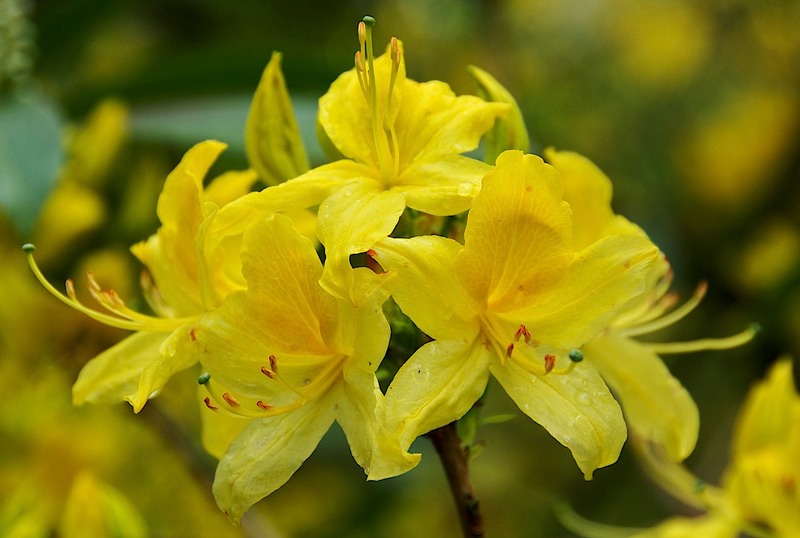
It’s the first of May; there are maypoles everywhere, and the rapeseed plants are in stunning yellow bloom, joining the wildflowers making an appearance. It was getting warmer, although there was still plenty of rain to keep everything green.
Visiting Gaby and Herb was just great. They fed us (constantly), gave us maps and advice and a really cool book of tons of places to park all over their country, and introduced us to the famous Jever beer, made in the town where they live. They also offered a badly needed washing machine; it shares the basement with Herb’s huge and amazing train set. We giggled a lot, talked about our first meeting in Mexico several years earlier, and were delighted we had kept up a correspondence ever since. As we left, they waved us off with promises that we’d meet again down the road. Next year they will be off on a 9-month motorhome trip to Asia. We are so very, very jealous, and can hardly wait for them to send us pictures!
Now, I know you’re thinking that we’re just aimlessly wandering again – not so! Hamburg, and our friends Toni and Berit Klumpenaar, lay directly between us and Denmark. We met Toni and Berit in Arizona this last winter, and they had said we had to go through Hamburg to get to the border and that we really must stop by. We were anxious to do so.
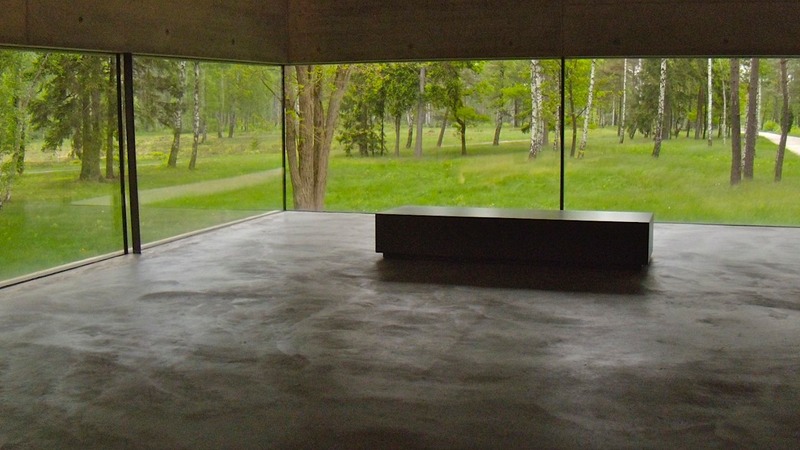
But we had a couple of small detours to make first. The Nazi camp at Bergen-Belsen is not too far south of Hamburg, on the Lüneburg heath, and we really wanted to go there. The museum was extraordinarily complete, including recent oral histories of some of the survivors, horrific footage taken by the soldiers who liberated the camp, a research library of documents, etc. The camp was first built in 1940 to house POWs; almost 18,000 Russian soldiers had died there by the end of 1942. It was expanded in order to accommodate the increasing number of “detainees.” This is the infamous concentration camp where 50,000 Jews died, including Anne Frank -- who died of typhus shortly before the camp was liberated. The grounds and buildings are quiet and understated, the woods filled with the trees that marked the old barracks, which had been burned down soon after the liberation in order to control the spread of disease. The cemetery area contains the enormous mass graves where the Allies buried the almost 12,000 unburied corpses they discovered when they arrived on April 15, 1945. We feel that these sites are very important to visit, but we certainly intend to spread them out over several visits, as they are difficult.
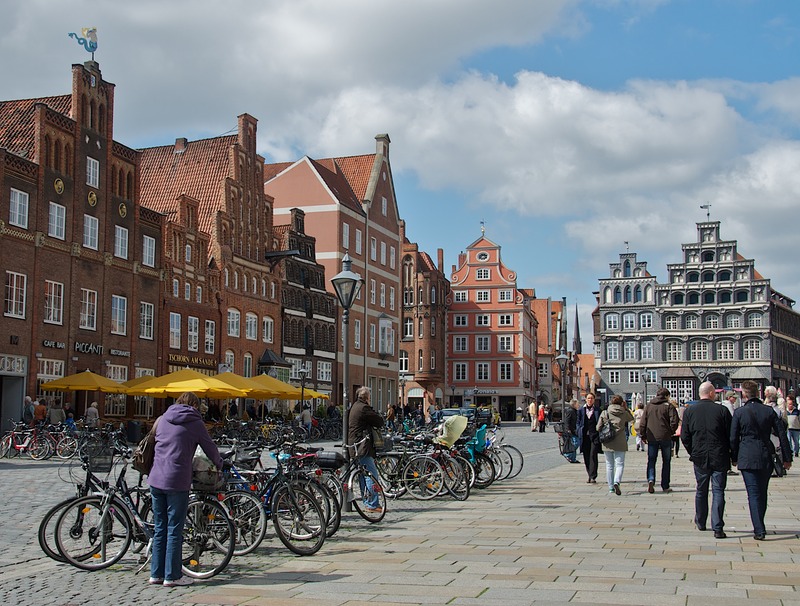
On a happier note, as we left and headed up to visit the city of Lüneburg, we heard our first cuckoo bird of the year, and traveling through the countryside we noticed large bags of potatoes (kartoffeln) for sale beside the road. Everyday, normal life. Lüneburg is a handsome old town with a great church and a huge town hall (rathaus) on a square that had a Saturday market underway when we arrived. Felt just like home, and we had a nice visit.
From there we trucked on over to the Hamburg area where we settled in with Toni and Berit. We had only planned on a short visit, but ended up spending several days, as they had put together an itinerary for all of us, including a two-day “field trip” accompanying Toni as he attended to some business. It was amazing. In between jaunts we did more laundry, ate copious amounts of food, and got good advice on where to visit in Norway (they couldn’t quite understand why we might be wanting to go through Denmark rather than take a ferry straight to Norway, but pointed out some interesting spots there as well).
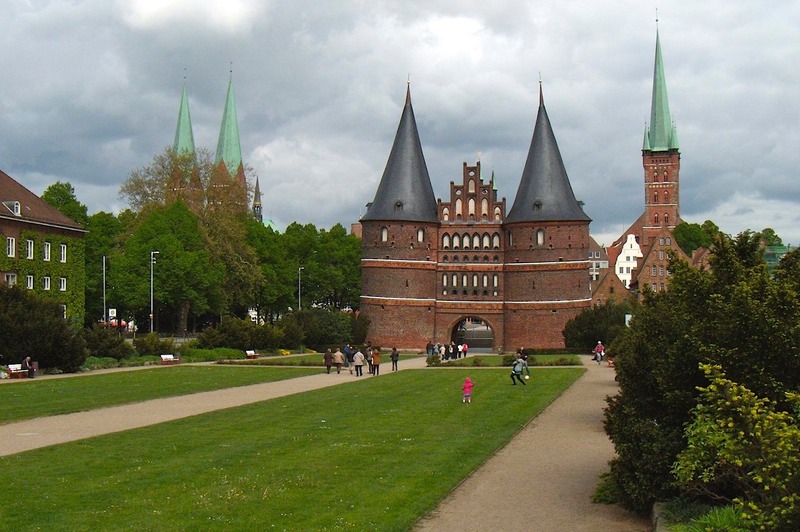
First we visited Lübeck. It had been high on my list anyway, so I was pretty excited. Lübeck is a Hanseatic city with a proud and ancient heritage. I had been there during my college years, and was delighted to find it hadn’t changed a bit. It contains many unusual and distinctive medieval buildings, including a cathedral that is quite amazing. There are houses leaning at silly angles (and bulging in the middle), and an entry gate that’s as famous as any in Europe. It was the first town in northern Europe to make it onto UNESCO’s world heritage list. Truly terrific. We were reminded that we may have changed countries, but we certainly hadn’t gotten away from the water.
We had started by checking out the seaside resort nearby, Travemünde, where we strolled the boardwalk and had a bite to eat, then came inland. We didn’t have as much time to spend as we might have liked, and Rick and I came back again later in the week. But we wandered the medieval quarter, and we did get to the JG Niederegger-Café. Marzipan was invented in Lübeck, and this “little shop” is where you go to get it. Forget your See’s candy; they don’t know from diddly about marzipan. This is the real deal. I’m now addicted. We had coffee and cake with a lovely marzipan frosting; to die for. My, my, my.
The next afternoon we dropped down into Hamburg to see some of the sights. Now this is one huge city, but we did a quick driving tour and saw the harbor as well as some little “insider” areas that not everyone knows about. It was a pretty afternoon and we had a good time.
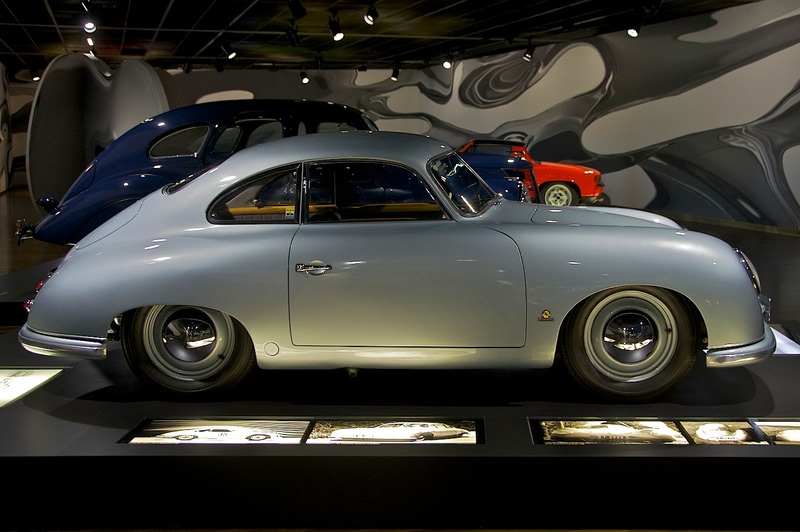
Then we took off for two days; first stop: Wolfsburg. What’s in Wolfsburg? It’s the home of Volkswagen and their showcase, state of the art everything-you-ever-wanted-to-know about the Beetle, etc. museum: Auto-Stadt. It was quite a place. Toni took care of business while Berit joined us wandering the huge complex, which contains a nice museum of technically significant autos from all over as well as special pavilions for each of the makes under the VW umbrella. We learned that VW is making a lot of money these days and recently bought Porsche, adding them to Audi, Seat, Skoda, Bentley, Bugatti and even Lamborghini, which are the makes they already own. You will find photos from Auto-Stadt at motor-museums.com.
Then we drove into the former GDR. Toni had a business meeting in Berlin the following day. The highway crossed the old border, passing a checkpoint area (spooky enough all by itself) and on towards Potsdam. From the highway nothing seemed very different, but as we began using smaller roads and passing through villages and small towns, Rick and I saw parallels with rural Bulgaria. We really want to explore this area fully, and will come back, either this fall or next year, but for now we were satisfied with an unexpected taste.
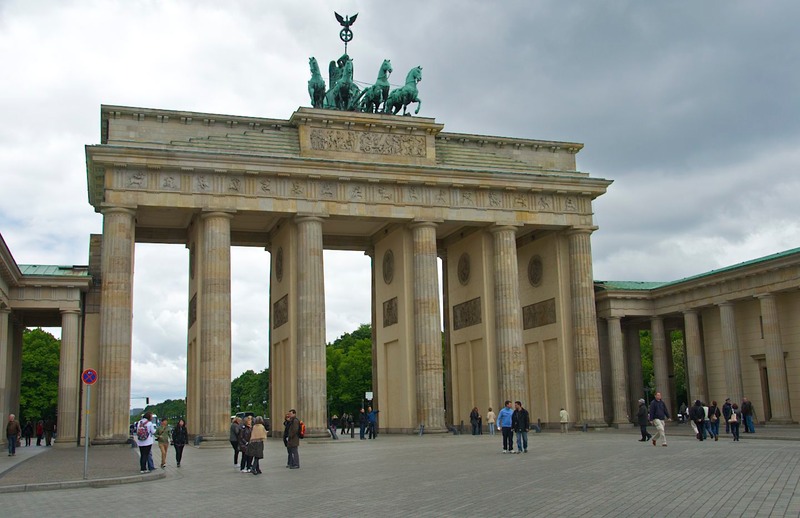
Outside Potsdam is a resort area; there are lots of lakes and waterways here. Pleasure boats wander in this direction and stay in the old, refurbished hotels. We spent the night in a very nice spot along the water, and had the most splendid dinner we’d had in years. Rick had chocolate brulée and fruit for dessert; I made do with mousse and some lovely sorbet. Amazing stuff.
We spent the next day introducing ourselves to Berlin. It’s quite a place. There is construction underway everywhere, total chaos, tremendous traffic/tour busses/streets blocked off. Lots of new companies headquartering here now. We chatted with a Frenchman, from Paris, running a little ice cream and coffee spot. Why was he here? Because this is where it’s happening. Berlin is tremendously vibrant and apparently is the new in-spot to be in Europe. We took a city bus tour, establishing places to check out further. Berit hadn’t been here in some time, and she was as enthusiastic about the visit as we were.
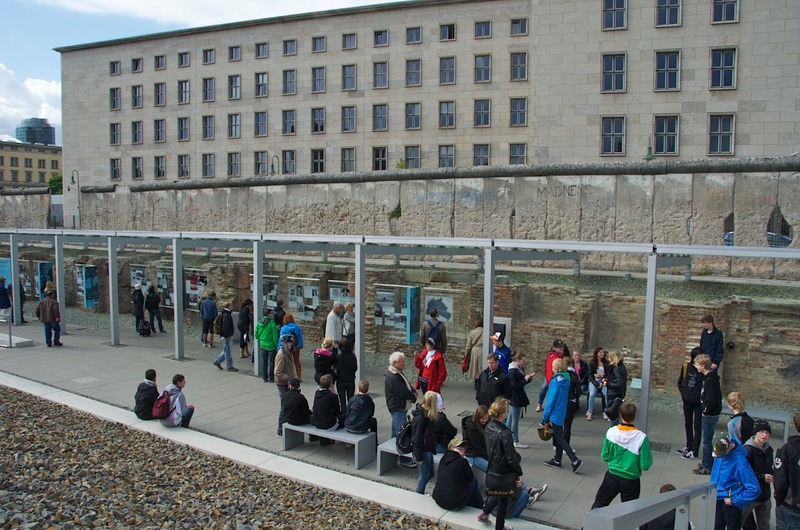
The Berlin Wall area got a lot of our attention. There is a relatively short piece of the wall still in place. Evidently there was a lot of discussion about the fact that so little was to remain; this may reflect the differences that exist throughout the city. It wasn’t just the opinions of the West that counted. In any case, there is also a cobblestone line on the street marking the former location of the wall throughout the city. In addition there is lots of information about other memorials all over town, and there is a walk you can take to visit all of them.
Right in this same spot there are many detailed informational displays talking about the course of World War II as it was experienced in Berlin. It seemed odd to us that this material would have been placed at this particular location. It seems to us that it reflects how Berlin is always in flux, changing, temporary. Perhaps it will have a better home the next time we visit.
Directly behind the Wall displays, the new museum, The Topography of Terror, is now open; it discusses the history of the Nazis. It is at the location of the former headquarters of the Gestapo and SS. This was very powerful stuff.
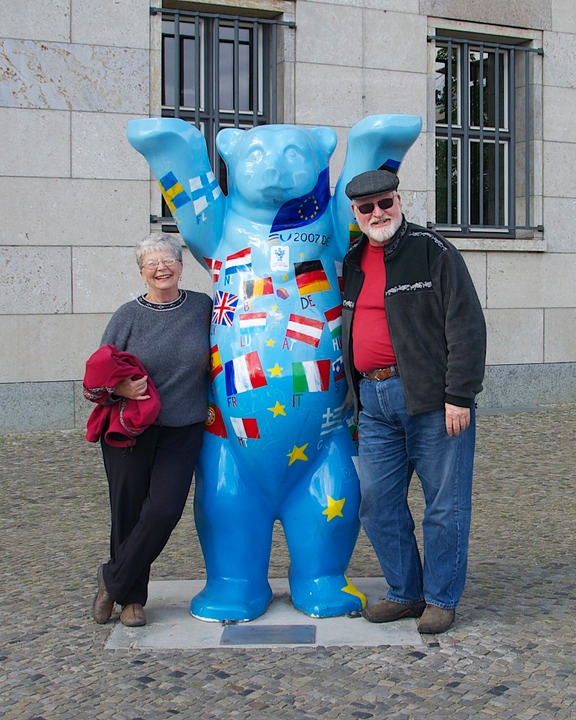
Despite all the serious information we studied, we had a very good day. We saw lots of the city, know we want to return, and are now a bit more familiar with how the city works. One really cool thing that happened? We saw a whole bunch of Buddy Bears. Do you remember them? We had seen the entire display of 140 bears in Montevideo, Uruguay in 2009. They were just finishing up their world tour and a couple of days later left to go back to Berlin. They had each been painted by an artist representing his/her country; some of the bears we saw in Berlin were at embassies, others in front of banks, etc. It was quite special for us to be able to renew our acquaintance.
After a long day we made the trip back to Hamburg. During our time with these new friends we had long discussions about Germany (now and in earlier times), world affairs, and our own backgrounds. Berit commented that the map of Germany used to have a large, blank white area in the northeast, where East Germany was. We were glad that was no longer the case.
But it was time to move on. After all, we had Scandinavia to see! We spent a couple more days in Germany, getting our act together, stocking up on supplies and fuel, and then got ready to cross the border. The lilacs are in bloom, it’s sunny and delightfully warm, we’re healthy and happy, and…whoo-haah! Off we go! See ya on the other side!
R&K and La Tortuga, with her Fabulous New Dancing Shoes
Click to see more photos of Belgium & Germany or The Netherlands.